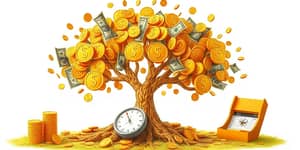In an era of soaring prices and economic uncertainty, mastering frugal living is more crucial than ever. By adopting smart strategies, you can regain control of your finances and build a secure future.
Why Frugal Living Matters in 2025
Between July 2024 and July 2025, the cost of essentials climbed sharply: food at home rose 2.2%, meats and poultry jumped 5.2%, eggs skyrocketed 16.4%, and nonalcoholic beverages increased 3.6%. Dining out costs went up 3.9%, while full-service meals rose 4.4% and limited-service options 3.3%. Even as gasoline fell 9.5%, electricity spiked 5.5%, squeezing household budgets from all sides.
Today’s job market is fiercely competitive, and the dream of home ownership and upward mobility feels more distant. Against this backdrop, frugal living emerges not as restraint but as a path to financial resilience and lasting peace of mind.
A growing “underconsumption core,” especially among young adults, rejects hyper-consumerism and embraces minimalism, proving that purposeful spending can align with deep fulfillment.
Defining Frugal Living: Beyond Sacrifice
Frugality is not synonymous with deprivation. Rather, it’s about intentional spending for maximum value—making purchases that deliver the greatest benefit relative to cost. This mindset transforms everyday decisions into investments in your well-being.
By focusing on building quiet wealth and long-term stability, you free yourself from paycheck-to-paycheck stress and open doors to early retirement, debt freedom and entrepreneurial pursuits.
Many people mistakenly equate frugality with dullness or scarcity. In reality, it invites creativity, resourcefulness and a renewed appreciation for what truly matters.
High-Impact Frugal Habits for Immediate Savings
Implement these tactics to generate quick wins and stay motivated:
- meal planning based on in-store sales to slash grocery bills
- switch to cash for discretionary spending to curb impulse buys
- repair and reuse everyday items to elongate product life
- batch cooking to reduce waste and enjoy set-and-forget dinners
- buy frozen or canned produce for affordability and nutrition
- leverage free community resources like libraries and exchange groups
Meal planning can cut your grocery spending by up to 20%. By mapping out your week around sale items and coupons, you transform aimless shopping into a targeted strategy that maximizes every dollar.
Opting for cash instead of cards creates a tangible budget boundary. As bills stack up in your wallet, you develop a visceral awareness of spending—making it easier to pause before a nonessential purchase.
Repairing torn seams, fixing a leaky faucet or restoring old furniture embodies repair and reuse philosophy. These projects save hundreds annually while nurturing valuable DIY skills.
Emerging Trends Shaping Smart Frugality
Recent grocery loyalty programs harness consumer data to personalize coupons, shifting couponing from a time-consuming chore to a precision tool that delivers relevant discounts directly to your phone.
Urban and suburban densification is enabling many to live within walking distance of work, shops and entertainment. Reduced reliance on cars translates to significant savings on fuel, insurance and maintenance.
On social media, influencers showcase minimalist wardrobes, capsule kitchens and zero-waste lifestyles. Their stories highlight how less truly can be more—fueling a cultural shift toward mindful consumption.
Real-Life Examples and Case Studies
Consider the classic “latte factor.” If you buy coffee five times a week at $3 per cup, you spend about $780 annually. Upgrade to a $6 latte, and that jumps to $1,560. By brewing at home for $0.50 a cup, you cap yearly costs at $130, freeing up $650–$1,430 for savings or investments.
*Based on five cups per week over 52 weeks.
Another household tracked their spending and realized cutting a $50 monthly streaming bundle and swapping to free library services saved $600 a year—funds they used to pay down credit card debt ahead of schedule.
At community swap meets, neighbors trade children’s toys, books and clothing. One family reported saving $400 in a single season by joining a local exchange network—yet another example of creative frugality at work.
Psychological Benefits and Mindset Shifts
Adopting frugal habits fosters a sense of control and reduces financial anxiety. As your savings grow, you experience stress-free financial security, enabling you to focus on passions, relationships and personal growth.
Aligning purchases with deeply held values cultivates spending aligned with core values, providing lasting satisfaction that transcends the fleeting high of impulse buys.
Building an emergency fund or sinking extra cash into investments nurtures resilience. When unexpected expenses arise, the buffer you’ve created grants you peace of mind and choice.
Getting Started: Practical Steps for Beginners
- tweak utility, subscription and insurance costs by negotiating or switching
- automate savings for steady growth with scheduled transfers
- shop smarter by comparing prices and taking advantage of bulk deals
- plan as if a downturn is imminent to build financial resilience
- track spending to celebrate progress and refine habits
Choose one step today—perhaps negotiating your internet bill or automating a modest savings transfer. Small victories breed confidence, motivating you to layer in additional strategies.
Conclusion: Empowerment through Frugal Living
Frugal living in 2025 is a proactive philosophy that marries conscious choices with long-term vision. By embracing strategic habits, you can weather economic storms, reduce stress and channel resources toward what truly enriches your life.
Begin now: audit a recent expense, set a simple savings goal, and track your progress. Over time, these incremental changes coalesce into substantial financial freedom—unlocking a future defined not by scarcity, but by choice and abundance.
References
- https://underthemedian.com/important-frugal-habits-you-need-to-save-money-in-2025/
- https://www.youtube.com/watch?v=NLL5Wu61pDk
- https://larajoannajarvis.com/frugal-living-tips-2025-save-money-budget/
- https://www.youtube.com/watch?v=gsyYQH194ko
- https://www.youtube.com/watch?v=9MEkA0UZFqc
- https://www.nasdaq.com/articles/4-easiest-frugal-living-tips-perfect-beginners-2025
- https://www.bls.gov/news.release/cpi.nr0.htm










